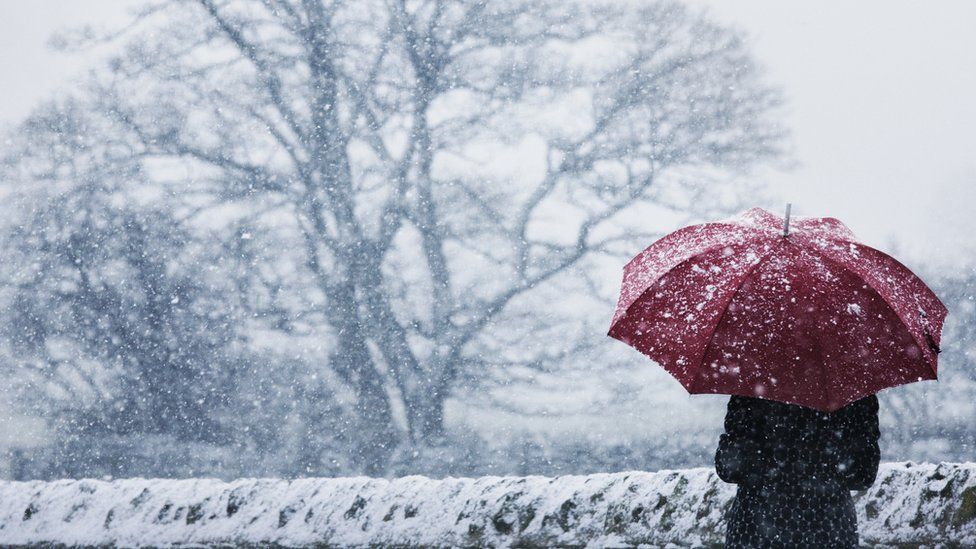ARTICLE AD BOX
 Image source, Getty Images
Image source, Getty Images
The UK Health Security Agency has issued an amber cold-health alert for the whole of England, meaning it expects the NHS to see increased demand as a result of the weather.
The weather alert service warns the public when high or low temperatures could damage their health.
How does the weather health alert system work?
Cold-health alerts are typically issued between 1 November and 30 March and heat-health alerts between 1 June and 30 September.
The system issues warnings to members of the public and sends guidance directly to NHS England, the government and other healthcare professionals during periods of adverse weather.
Alerts are categorised according to severity and include:
- headline weather conditions expected in the coming days
- details of how weather conditions will affect each region
- links to additional information, advice and guidance.
The system was designed to help reduce illness and deaths by improving communication between the public and relevant bodies during periods of extreme weather.
What does each level mean?
The level of alert is based on Met Office forecasts and data.
There are four levels ranging from green (least severe) to red (most severe):
Green is the normal level, when advice is given on how people should prepare to respond if temperatures rise or fall.
Yellow alerts are issued during periods of hot or cold weather that are only likely to affect those who are particularly vulnerable, for example, the elderly or those with existing health conditions.
Amber alerts are issued in situations that could potentially put the whole population at risk. The NHS may see increased demand on GPs and ambulances, for example.
Travel disruption is also likely.
A red alert is the most severe.
It is issued in situations when hot or cold weather would be a significant risk to life, for even the healthy population, and could lead to failures of critical national infrastructure, such as power outages or roads and rail lines being closed.
Which areas are covered by the latest cold-health alert?
On 14 January, the existing yellow cold-health alerts issued by the UKHSA were upgraded to amber across all regions of England:
- the North West
- the North East
- Yorkshire and the Humber
- the East
- West Midlands
- East Midlands
- the South East
- the South West
- London
The UKHSA said that the cold weather "can rapidly have a serious impact on the health of those over the age of 65 and those with pre-existing health conditions".
"It increases the risk of heart attacks, strokes and chest infections," warned Dr Agostinho Sousa, head of extreme events and health protection at UKHSA.
The amber alert will remain in place until noon on Friday 19 January.
Separately, the Met Office has also issued yellow warnings for snow and ice for Scotland, Northern Ireland, much of northern England and north Wales.
Find out the weather forecast for your area, with an hourly breakdown and a 14-day lookahead, by downloading the BBC Weather app: Apple - Android - Amazon
The BBC Weather app is only available to download in the UK.

 1 year ago
46
1 year ago
46








 English (US) ·
English (US) ·